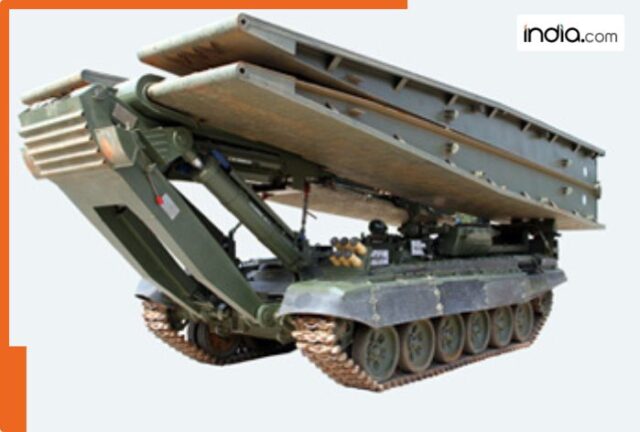The BLT is a vital machine used by the mechanized forces to quickly set up bridges during both offensive and defensive operations.
THE MINISTRY OF DEFENCE (MoD) has signed a deal with the Heavy Vehicles Factory, which is part of Armoured Vehicle Nigam Limited, to supply 47 T-72 Bridge-Laying Tanks (BLTs) for the Indian Army. The total cost of the contract is ₹1,560.52 crore.
The agreement was signed by senior officials of the Ministry of Defence and Heavy Vehicles Factory/Armoured Vehicle Nigam Limited, in New Delhi, on Tuesday (January 21, 2025), in the presence of Defence Secretary Rajesh Kumar Singh, as reported by the Press Information Bureau (PIB), New Delhi.
The BLT is a vital machine used by the mechanized forces to quickly set up bridges during both offensive and defensive operations. It allows tanks and armoured vehicles to overcome obstacles by providing built-in bridge-laying support, thus enhancing battlefield mobility and strengthening attack capabilities.
The Bridging System includes:
- A Launching Mechanism
- Bridge Structure
- Hydraulic Systems
- Auxiliary Components, and
- Electronic Control System
The T-72 BLT is equipped with a 20-metre-long prefabricated steel bridge that can be quickly deployed over obstacles. This allows various types of vehicles, including heavy armoured vehicles (A vehicles) and lighter vehicles, such as trucks and jeeps (B vehicles), to cross over obstacles easily.
A BLT helps tanks move forward by quickly overcoming such natural obstacles as rivers or ditches, as well as man-made barriers designed to stop tanks. It allows advancing tank units to cross these hurdles easily, ensuring smooth movement during missions. The tank can quickly lay down its bridge and, then, retrieve it from the other side once all the tanks have safely crossed over.
The BLT can be built on tanks from both Western and Eastern Europe. It can deploy two types of bridges:
1. A 20-metre ‘scissors’ bridge that can handle vehicles weighing up to 60 tons (known as MLC 60, where MLC stands for Military Load Classification)
2. A 22-metre ‘scissors’ bridge that can support vehicles weighing up to 70 tons (MLC 70)
In simple terms, these classifications indicate the maximum weight that the bridge can safely carry, allowing heavy military vehicles, including tanks, to cross over without any issues.
The term, ‘scissors bridge’, refers to the unique folding mechanism of the bridge, which resembles the opening of a pair of scissors. When not in use, the bridge remains folded on top of the tank, making it easy to transport. Once the tank reaches an obstacle, the bridge unfolds into position, creating a sturdy pathway for vehicles to cross over. This design allows for quick deployment and retrieval, making it highly efficient in military operations.
TECHNICAL SPECIFICATIONS
- Weight: 49 T
- Crew: 2
- Overall Length: 11.36 m
- Overall Height: 3.8 m
- Overall Width: 4.0 m
- Max. Road Speed: 60 kph
- Engine Power: 780 HP
- Power-to-Weight Ratio: 16.12 HP/T
- Bridge type: Scissors Launch
- Shallow Fording (Medium Fording with Snorkel): 1.8 m
- Vertical Obstacle: 0.76 m
- Trench Crossing: 2.4 m
- Gradient: 25°
- Anti-Aircraft Machine Gun: 12.7 mm
The vehicle has a very limited number of weapons on board. It mainly carries personal weapons of the crew, a machine gun for defence against air threats and a smoke-launcher to create a protective smoke screen. Additionally, it can be equipped with a KMT-6 mine plough at the front, which is used to clear landmines and make the path safe for movement.
(The author of this article is an award-winning Science Writer and a Defence, Aerospace & Political Analyst based in Bengaluru. He is also Director of ADD Engineering Components, India, Pvt. Ltd, a subsidiary of ADD Engineering GmbH, Germany. You can reach him at: girishlinganna@gmail.com)

















































